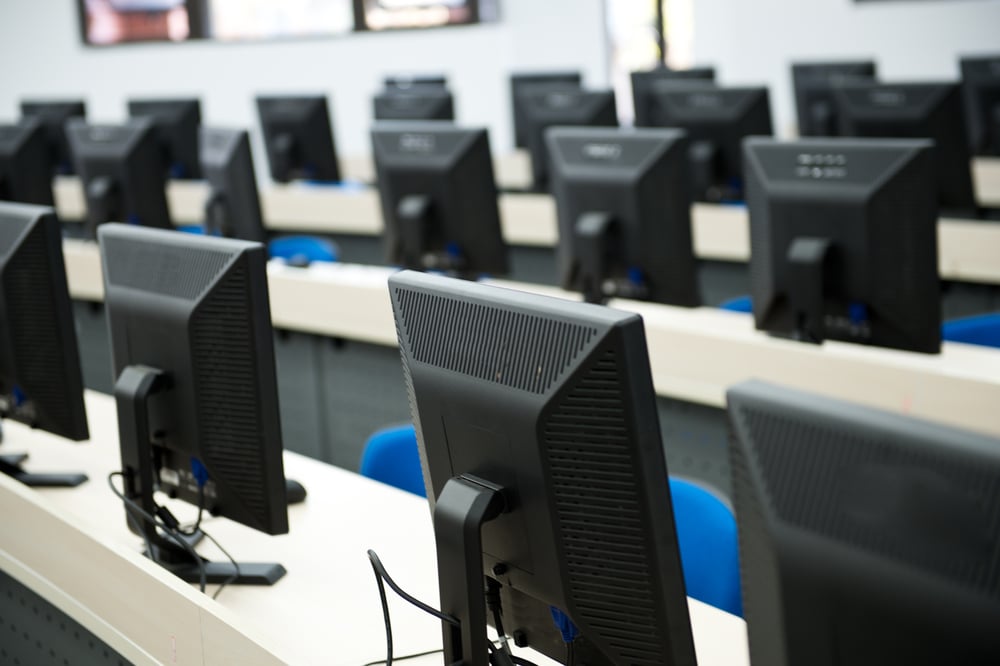Advances in technology have spurred significant changes in nearly every industry. Although the field of education has leveraged some of these new technologies over the years, there haven’t been the fundamental changes we’ve seen in other sectors. That’s now changing.
Tech Evolution in Education
The SAMR model shows the evolution of technology as it relates to education.
-
Substitution – Technology acts as a direct tool substitution with no fundamental changes
-
Augmentation – Technology acts as a direct tool substitution with some improvements in methods
-
Modification – Technology allows for significant task redesign
-
Redefinition – Technology allows for creation of new tasks, previously inconceivable
A major initiative from the redefinition category now taking hold is One to One Personalized  Learning programs. These programs are geared to each student’s individual aptitude and skill set. They drive engagement by connecting learning to students’ interests, talents, passions, and aspirations and focus on the way students learn as opposed to how teachers teach. Studies show significant gains in achievement and reductions in dropout rate as a result of adopting these types of programs.
Learning programs. These programs are geared to each student’s individual aptitude and skill set. They drive engagement by connecting learning to students’ interests, talents, passions, and aspirations and focus on the way students learn as opposed to how teachers teach. Studies show significant gains in achievement and reductions in dropout rate as a result of adopting these types of programs.
Key Success Components
The One to One Institute has established a Key Implementation Protocol consisting of seven key components necessary to ensure student success and financial viability of these programs.
-
Strong Leadership- Having school leaders across the system, from superintendents to teachers in the classroom, support and drive this change is pivotal to the success of the program.
-
Communication – There needs to be a strong, all encompassing messaging plan to broadcast the vision of the program. It must also include a two-way feedback loop to ensure everyone involved has a change to offer input.
-
Evaluation & Assessment – A continuous system of improvement must be in place in order to assess the effectiveness of the program.
-
Professional Development – Students are not the only ones who need to continually grow. Leaders need ongoing learning opportunities as well.
-
Curriculum & Instruction – Nothing else matters if no standards are in place. A documented plan of the curriculum and instruction techniques is the backbone of a one to one program.
-
Infrastructure – To support the program, a solid technology platform needs to be in place. This means testing all the components of the system including bandwidth, connectivity, networking, wireless access, and uninterrupted access to the system from all points.
-
Financial Planning – A sustainable one to one program can’t be built on soft money from grants and other one-time sources. School systems need to devote appropriate resources to launch, maintain, refresh, sustain, and scale the program.
Why are one to one programs essential? Because experts in the field are convinced current practices are not working. Students are disengaged and learning is suffering. Taking advantages of the existing technology to radically improve our educational system is crucial if we hope to grow leaders who can compete in the world economy in the future.
Learn more at http://explore.dyntek.com/k12-best-practices.




 Learning programs. These programs are geared to each student’s individual aptitude and skill set. They drive engagement by connecting learning to students’ interests, talents, passions, and aspirations and focus on the way students learn as opposed to how teachers teach. Studies show significant gains in achievement and reductions in dropout rate as a result of adopting these types of programs.
Learning programs. These programs are geared to each student’s individual aptitude and skill set. They drive engagement by connecting learning to students’ interests, talents, passions, and aspirations and focus on the way students learn as opposed to how teachers teach. Studies show significant gains in achievement and reductions in dropout rate as a result of adopting these types of programs.